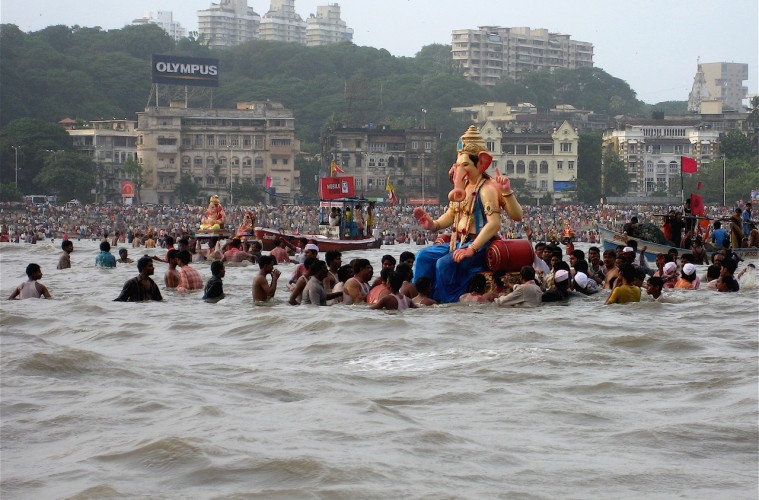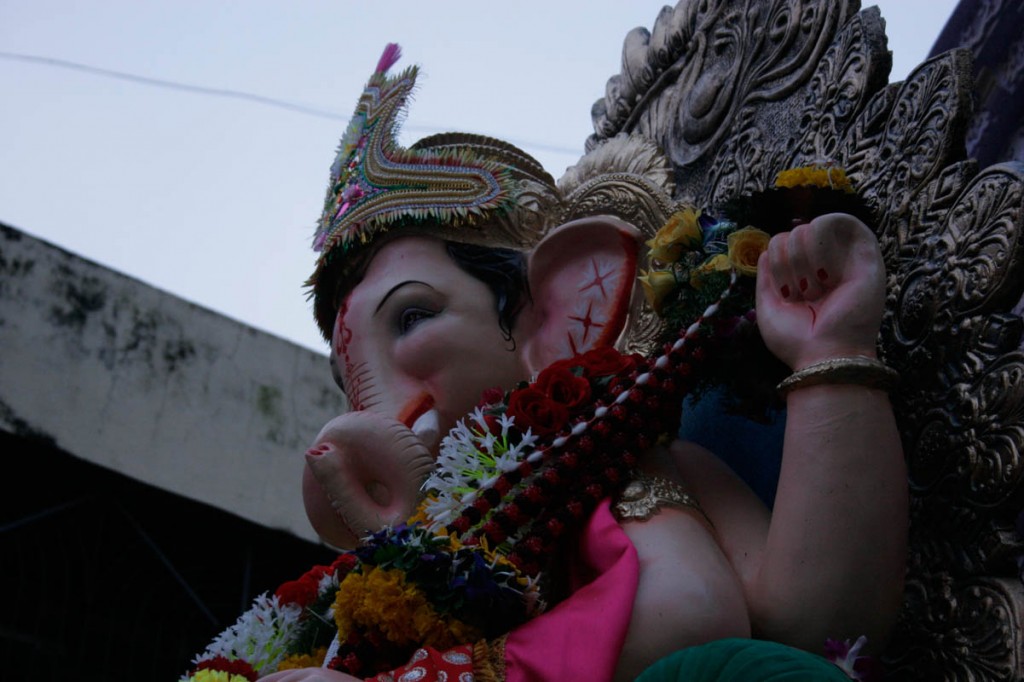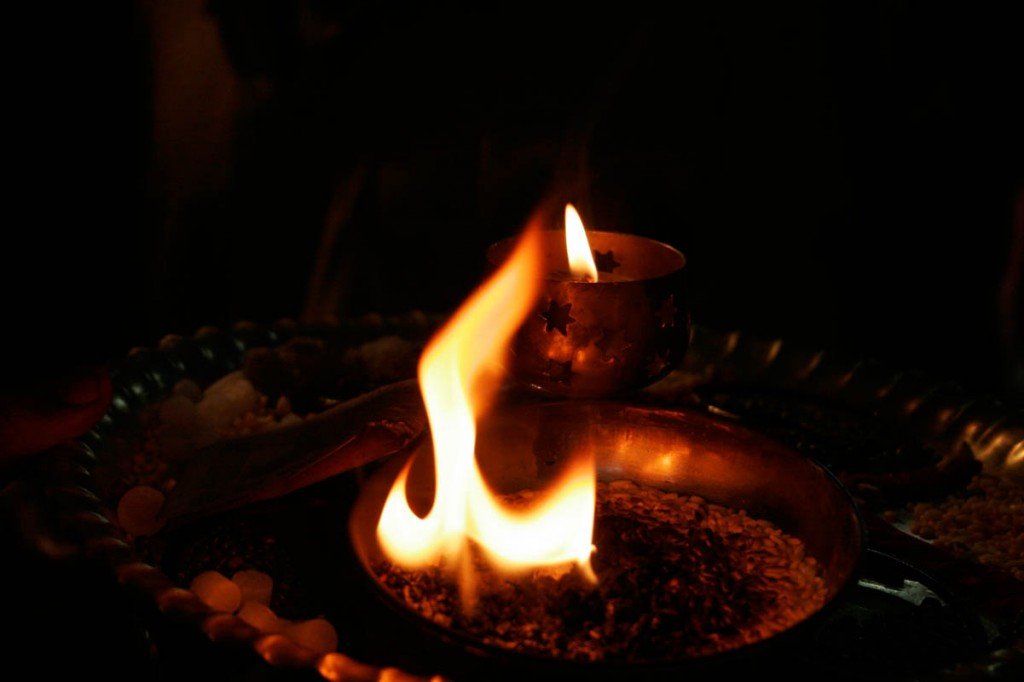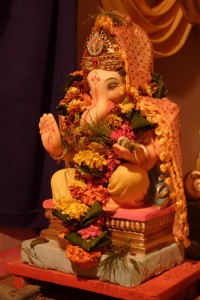Ganesh Chaturthi or Ganpati festival, which marks the birth of Lord Ganesh, is celebrated all over India but it can be best observed in the state of Maharashtra especially in Mumbai and Pune. The modern history of the festival dates back to pre-independence era when Lokmanya Tilak saw potential in the power of religious festivals to encourage a desire for political independence. He transformed the festival from a small domestic scale to a large scale outdoor event and made it a vehicle to educate the people about the importance of Swaraj through fiery speeches. Thus, Ganpati festival, as it is celebrated today, was born.
In its present form, the Ganpati festival is a ten day festival. Lavishly adorned pavillions or pandals are put up by various mandals belonging to residential blocks, streets, markets, wealthy industrialists and organizations with idols or murtis of Ganesh at the heart of it. These idols are installed in pandals on the first day of the festival where a special ritual is performed to welcome the lord.
The duration of the Lord’s stay varies in each home and neighbourhood. The idol may be kept for one and a half or two and a half or five or seven or 10 days after its installation, depending upon the family tradition and organizers respectively. People gather to offer prayers and celebrate and conduct cultural programmes every day. Often, fairs and exhibitions are also organised to enhance the festive mood.
Though different people and mandals immerse the idols on different days of the ten day-long festival, the bigger, more revered idols are immersed on the last two days especially the final day known as Anant Chaudas. The pride of the place belongs to the famous Lalbaugcha Raja (the king of Lalbaug). Placed on flat-bed trucks the idols are carried to the sea where the Visarjan or the immersion ceremony is performed amidst cries of ‘Ganpati Bappa Morya, pudhyacha varshi lavkar ya’ – Jai Ganesha, return soon next year – and drum beats. Gradually, the idols are immersed.
During Ganpati festival, another major ceremony is performed in many households in Maharashtra. It is called Gauri Pujan or Mangala Gauri. The mother of Ganesh, Parvati, is also known as Gauri. The Gauri idol is brought home one day before the Gauri Pujan. The idol is then decorated with jewellery like green bangles, mangalsutra, nose ring, necklace and veni – all marks of a married Hindu woman. On the night of the Gauri Pujan women gather together and sing Mangala Gauri songs which reflect the lifestyle of Hindu married women. Men do not take part in this function.
After the Puja, women visit each other’s homes to offer a coconut, a piece of cloth, flowers, bananas, rice and even new sarees to the idol of Goddess Gauri and the very next day of the pujan, usually the sixth day of Ganpati, the idol is taken in a procession for visarjan or immersion. The first Gauri pujan is considered very important for a newly married Maharashtrian woman.
Much goes into the making of the idols as artisans vie with each other to make better idols, orders are taken, and make-shift Ganesh shaalas or studios spring all over the city. Idols ‘Made in Penn’, some 120 km away from Mumbai, command higher prices than the ones made in Mumbai or elsewhere. Penn has over five hundred units manufacturing the idols where they are crafted, sculpted, designed and painted. The cottage industry is a source of employment to many. Back in Mumbai, migrants from Uttar Pradesh and Bihar find easy employment at Ganesh shaalas across the city and form almost half of the city’s idol making workforce. The idols, originally meant to be made with clay or sticky mud, started being made with Plaster of Paris and decorated with non-biodegradable material like chemical paints which pollute the water they are immersed in, disrupting natural ecosystems. With more awareness there has been a greater thrust to make eco-friendly Ganeshas by various mandals and revert to mud/ clay and natural or water-based paints.
The other problem with the Ganpati festival is of abandoned idols. The well-known and sought after idol makers only make Ganesh idols to order, they don’t have any left over. However, the lesser-known ones make idols in anticipation of their sale and have to store their ‘extra’ statues. However in a city, where space is scarce and costly, many idol makers do not have workshops of their own. They rent a room or put up a temporary shed, and close shop after selling their idols. They cannot keep the ones that remain unsold. At times, they dissolve such idols in buckets of water and re-use the clay, or break them or just abandon them in the Dadar-Lalbaug belt of Mumbai. Some idol makers view this act as lack of respect by artisans towards their art while others find themselves in a ‘no-other-option’ situation.
Whatever be the case, the air is electric in Mumbai during the ten-day Ganpati festival – colours, drum beats, children, women, flowers, chants, songs, hymns, sweet-meats fill the air. Mumbai dressed up for Lord Ganesha and it is an experience that one should not miss if in the city during this period. You just have to get your feet in, walk with the crowds, dance (there is even Trance Ganesha), eat and occasionally shout out with everyone – Ganpati Bappa Morya!
Where to see the famous idols: Lalbaugcha Raja in Lalbaug, Parel, Girguamcha Maharaja, housed in Nikadwari Lane, one of the oldest and has a clay idol, Parelcha Raja in Vile Parle for its eco-friendly Ganpati idols, Tulsiwadi Sarvajanik Ganeshotsav Mandal, Tardeo in Mumbai Central for its interesting use of different materials each year (glass, German silver, sandalwood and even artificial diamonds!).
Where to see the immersion: The largest statues are immersed 11 days after the first day of the festival. Head to Girgaum Chowpatty, Juhu beach and Versova beach in Andheri.
Shriti K Tyagi is the founder of Beyond Bombay. To book her Lanes of Lalbaug walk on Sept 12 or Sept 13, 2015, email her at [email protected].





